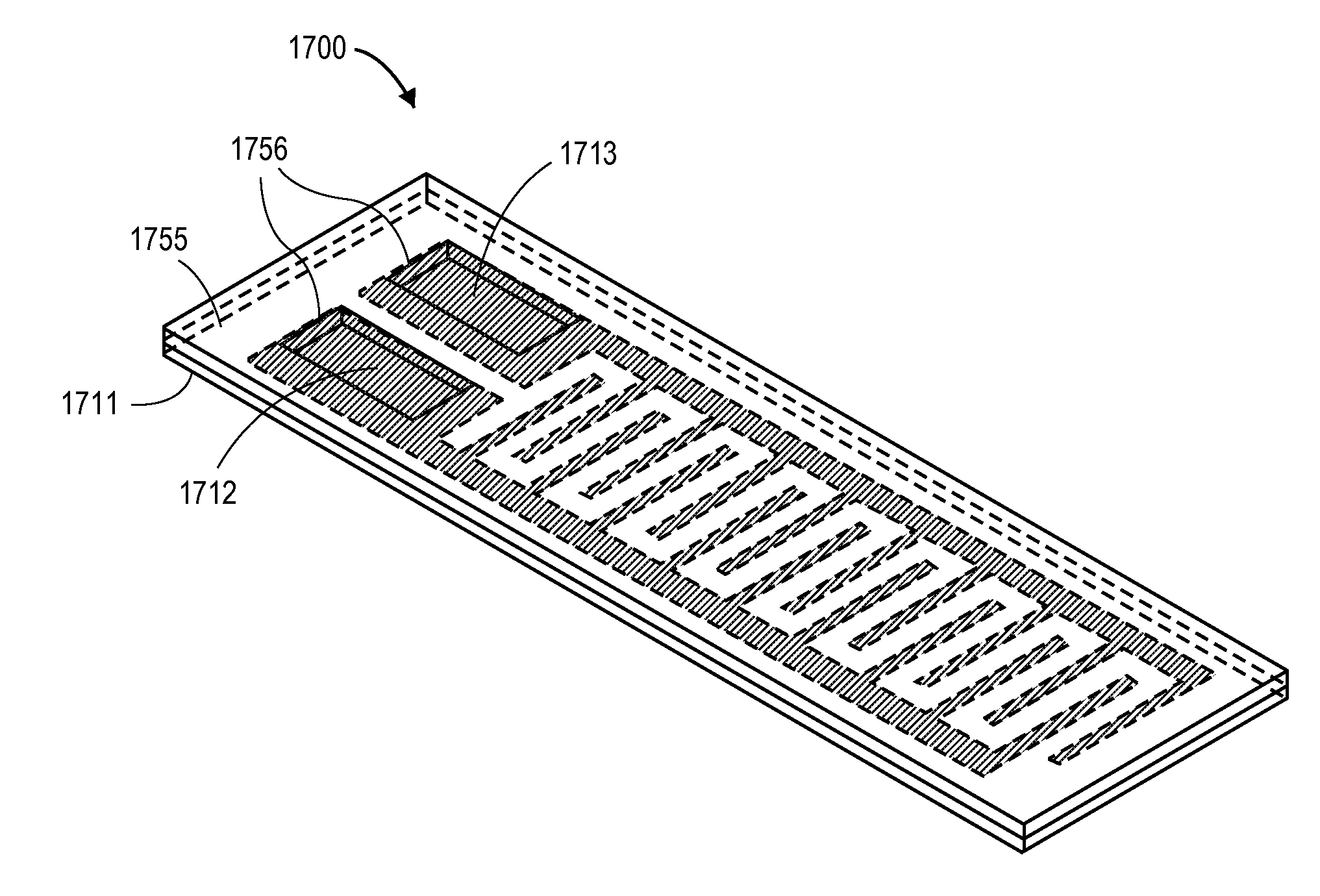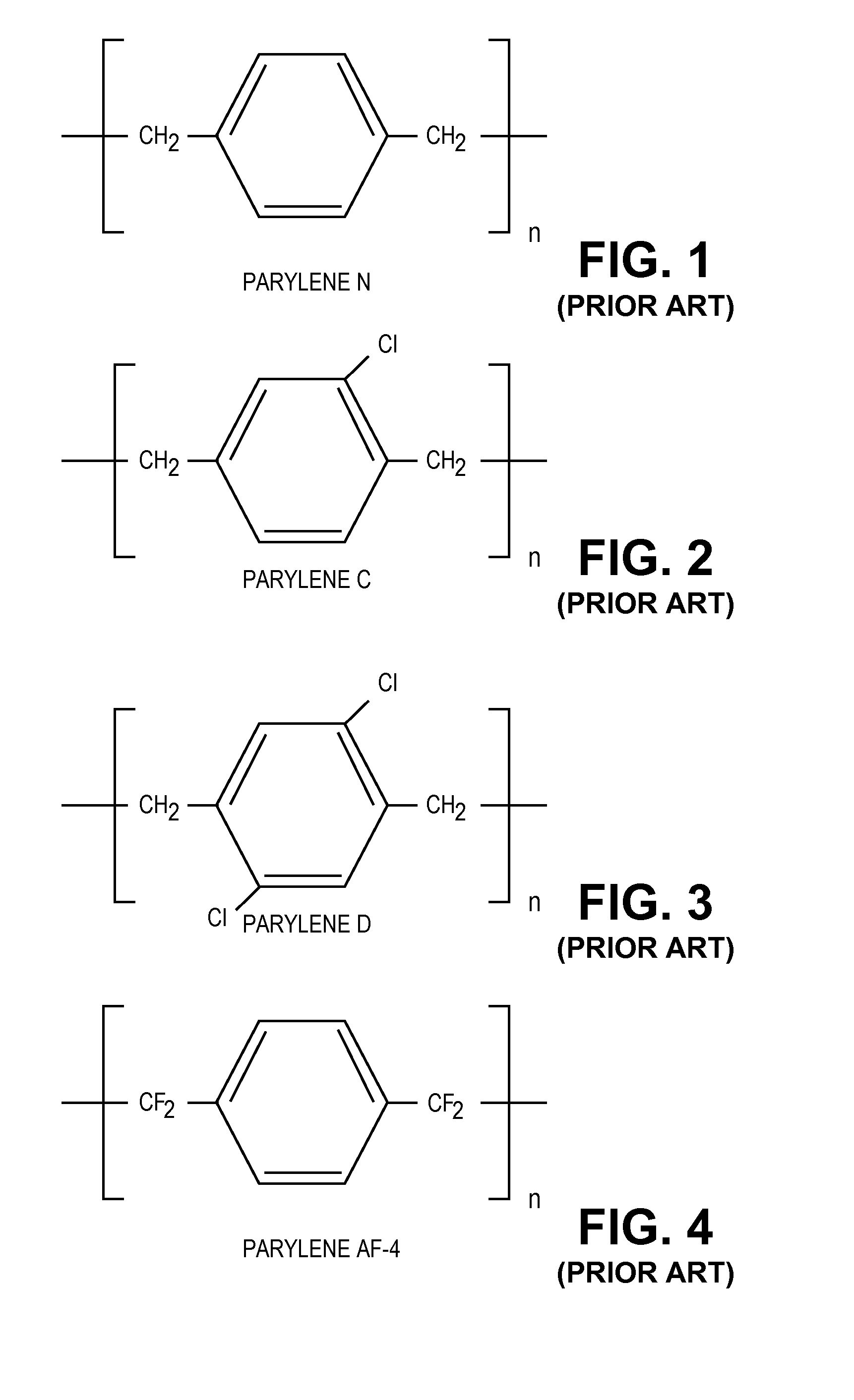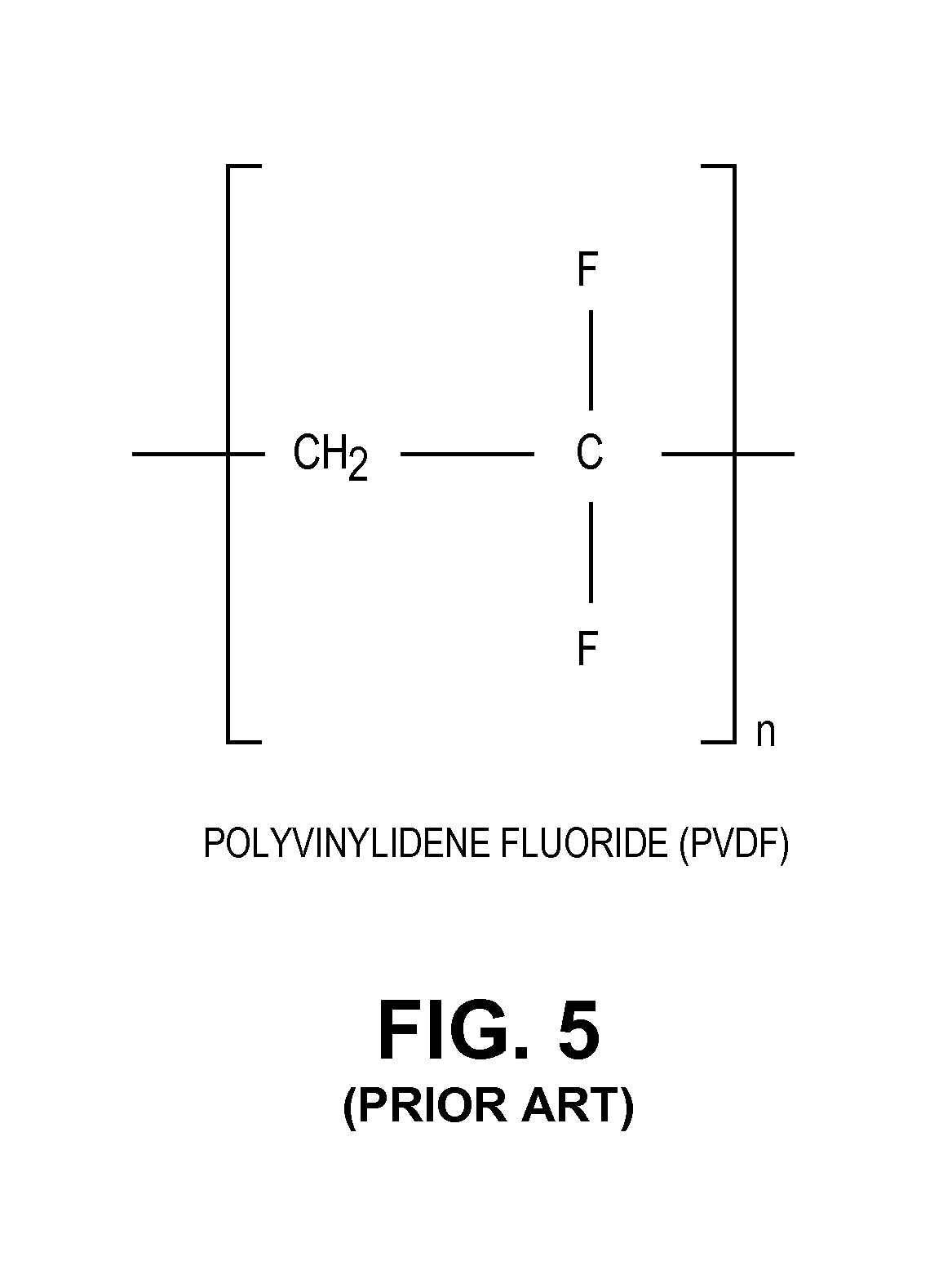Parylene-c as a piezoelectric material and method to make it
a piezoelectric material and piezoelectric technology, applied in piezoelectric/electrostrictive transducers, generators/motors, instruments, etc., can solve the problem that parylene d generally deposits less uniformly than parylene
- Summary
- Abstract
- Description
- Claims
- Application Information
AI Technical Summary
Benefits of technology
Problems solved by technology
Method used
Image
Examples
Embodiment Construction
[0050]In general, piezoelectric parylene C is presented. Methods for manufacturing it using poling techniques as well as devices that incorporate it are also described. Piezoelectric parylene C has apparently not been reported before.
[0051]A portion of standard, stock parylene C film that has not been electrically poled can be electrically poled by heating it to a temperature of about 100° C. to 350° C. while applying an electric field between 5 MV / m and 40 MV / m, then quenching it to room temperature. Other methods of manufacture are described.
[0052]A parylene C film with a thickness of less-than-or-equal-to (≦)100 μm has been found to be effective. Such thicknesses can easily be achieved using chemical vapor deposition techniques.
[0053]Parylene was first produced in a laboratory in the 1940s and was commercialized in the 1960s. Despite the many studies of parylene polymers—and heavy reliance by industry in many types of high-end manufacturing—there has been no report before of any ...
PUM
| Property | Measurement | Unit |
|---|---|---|
| Temperature | aaaaa | aaaaa |
| Temperature | aaaaa | aaaaa |
| Temperature | aaaaa | aaaaa |
Abstract
Description
Claims
Application Information
 Login to View More
Login to View More - R&D
- Intellectual Property
- Life Sciences
- Materials
- Tech Scout
- Unparalleled Data Quality
- Higher Quality Content
- 60% Fewer Hallucinations
Browse by: Latest US Patents, China's latest patents, Technical Efficacy Thesaurus, Application Domain, Technology Topic, Popular Technical Reports.
© 2025 PatSnap. All rights reserved.Legal|Privacy policy|Modern Slavery Act Transparency Statement|Sitemap|About US| Contact US: help@patsnap.com



